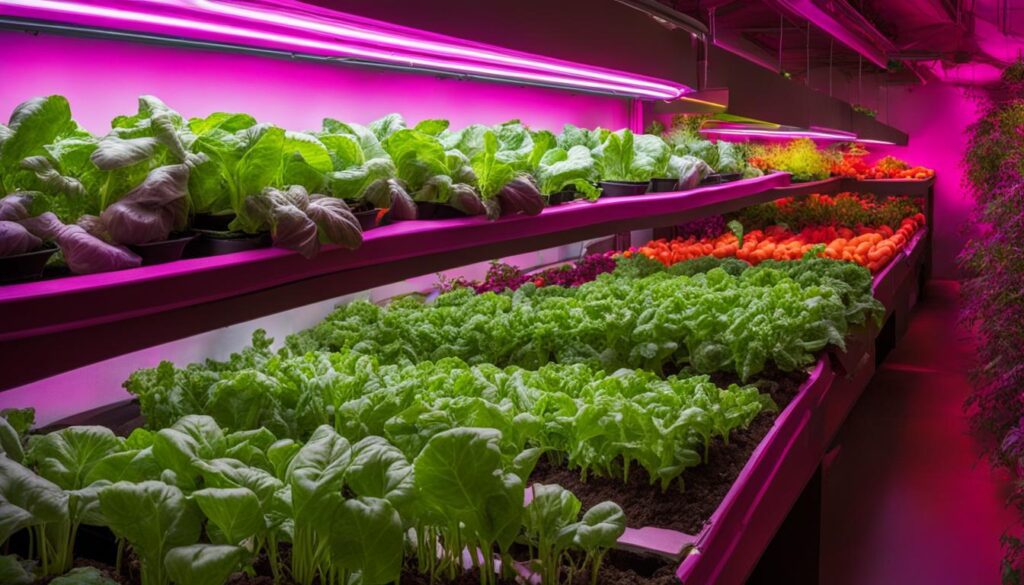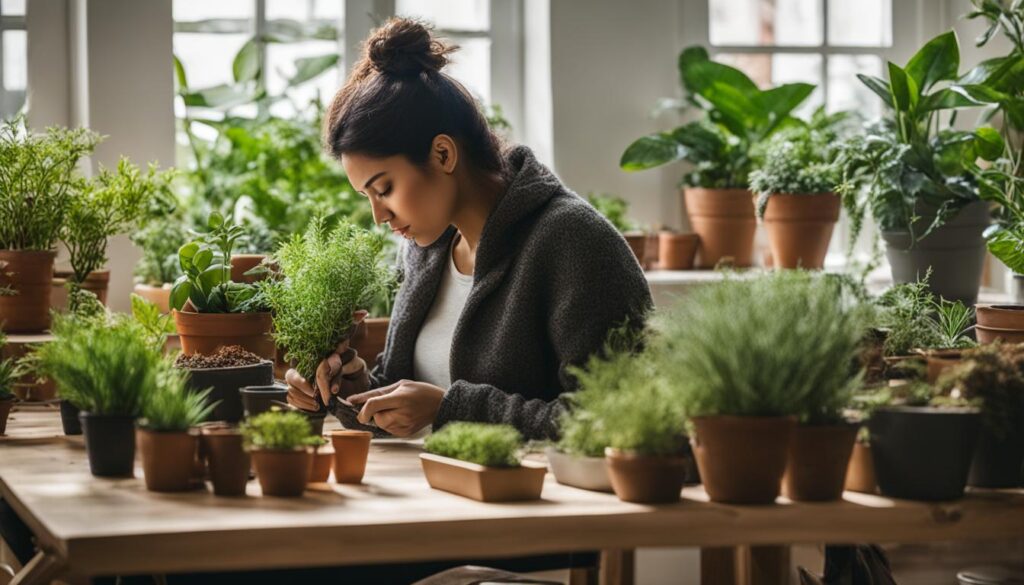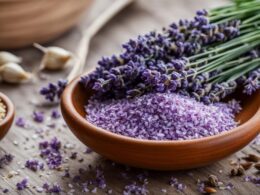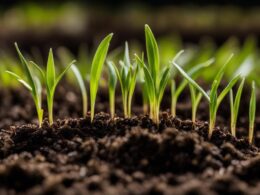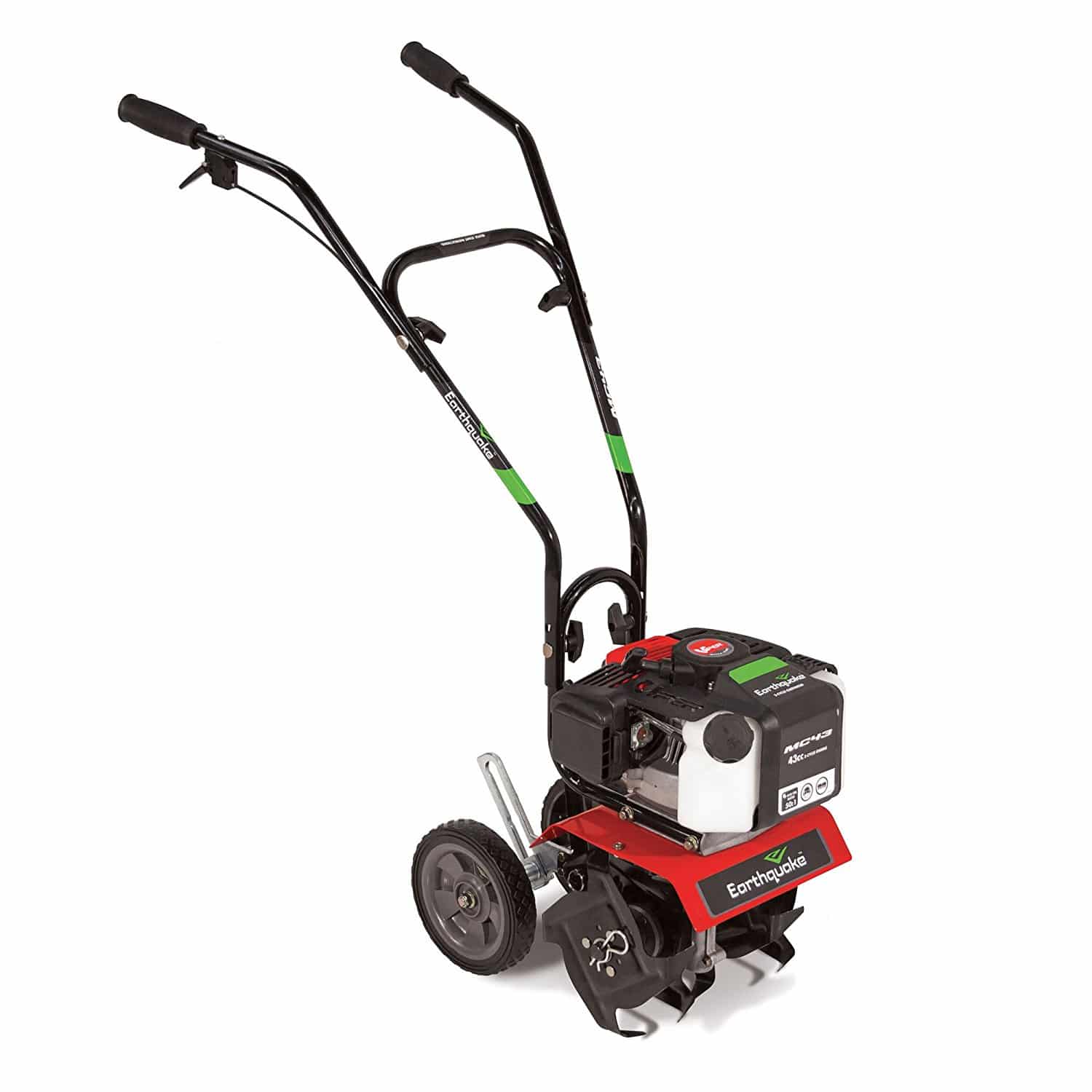Are you interested in indoor gardening and wondering if you can grow vegetables indoors during the winter months? The answer is a resounding yes! While it may seem challenging, with the right techniques and equipment, you can maintain optimal indoor gardening and enjoy a bountiful harvest right in the comfort of your home.
Indoor vegetable gardening during winter has its own set of challenges. Vegetables are accustomed to outdoor conditions, such as full sun, ample air circulation, and natural rainfall. However, with the right strategies, you can overcome these challenges and successfully grow vegetables from seed to harvest even in the dark days of fall and winter.
Key Takeaways:
- Growing vegetables indoors in winter is possible with the right techniques and equipment.
- Challenges of indoor vegetable gardening include lack of natural light and dry air.
- Easy methods for indoor vegetable gardening include sprouting seeds, growing microgreens, and cultivating salad greens.
- Choosing suitable plants like leafy vegetables, herbs, tomatoes, and peppers is essential for indoor gardening success.
- Setting up and maintaining your indoor garden involves proper containers, lighting, watering, fertilizing, humidity control, temperature regulation, air circulation, and pest control.
The Challenges of Indoor Vegetable Gardening
Growing vegetables indoors during the winter comes with its fair share of challenges. When you bring the garden inside, you’ll be fighting against Mother Nature herself. Vegetables are naturally adapted to growing outdoors in full sun, benefiting from ample air circulation and regular rainfall. However, when you move them indoors for the winter months, they face a whole new set of obstacles.
One of the biggest challenges for indoor vegetable gardening is the lack of natural light. During the winter, days are shorter and sunlight is limited, which can greatly affect plant growth. Vegetables need sufficient light for photosynthesis, and without it, they may experience weak and stunted growth. This can also lead to increased vulnerability to pests and diseases, as well as overall poor plant health.
Another challenge is the dry air typically found indoors during winter. Vegetables thrive in environments with moderate humidity levels, but indoor heating systems can cause the air to become dry. This can result in further stress on the plants and hinder their growth and development.
“Growing vegetables indoors during the winter comes with its fair share of challenges. When you bring the garden inside, you’ll be fighting against Mother Nature herself.”
Fighting Mother Nature: Overcoming the Challenges
While it may seem daunting, there are ways to overcome the challenges of indoor vegetable gardening during the winter. By providing supplemental lighting, you can ensure your plants receive the necessary light for optimal growth. Artificial grow lights, such as fluorescent or LED lamps, can be used to mimic sunlight and provide the right spectrum of light for photosynthesis.
In addition to lighting, maintaining proper humidity levels is crucial. You can increase humidity by misting the plants regularly or using a humidifier. This helps to counteract the dry indoor air and create a more favorable environment for your vegetables to thrive.
Overall, indoor vegetable gardening in winter requires extra attention and care, but with the right techniques and equipment, you can successfully grow your own fresh produce all year round.
Easy Methods for Indoor Vegetable Gardening
When it comes to indoor vegetable gardening, there are several easy methods that can yield successful results. Whether you have limited space or lack natural sunlight, these techniques can help you grow fresh vegetables all year round.
1. Sprouting Seeds in a Mason Jar
One simple and foolproof method for indoor vegetable gardening is sprouting seeds in a mason jar. This technique requires minimal equipment and is perfect for beginners. Start by soaking the seeds overnight, then drain and rinse them. Place the seeds in a mason jar with a mesh lid or a piece of cheesecloth. Rinse the seeds twice a day and keep them moist. Within a few days, you’ll have sprouts ready for consumption.
2. Growing Microgreens
Microgreens are slightly more mature than sprouts and can be grown indoors. These young greens are packed with nutrients and can be harvested within a couple of weeks. To grow microgreens, scatter seeds on a tray or container filled with potting soil. Cover the seeds with a thin layer of soil and mist them with water. Keep the soil moist and provide them with adequate light. In just a few weeks, you’ll have flavorful and nutritious microgreens to add to your dishes.
3. Cultivating Salad Greens
If you have access to artificial lighting, such as fluorescent or LED lamps, you can easily grow salad greens indoors. Leafy vegetables like lettuce, spinach, and kale require less light than fruit-producing plants and can be grown in compact spaces. Start by sowing the seeds in a container filled with a well-draining potting mix. Place the container under the grow lights, ensuring they are on for about 12-16 hours a day. As the greens grow, regularly harvest the leaves for fresh salads.
By utilizing these easy methods, such as sprouting seeds, growing microgreens, and cultivating salad greens, you can enjoy a bountiful indoor vegetable garden throughout the winter months. These techniques require minimal space and can be easily managed even for beginners. So get started today and bring the joy of gardening indoors!
Choosing the Right Plants for Indoor Gardening
Growing vegetables indoors during the winter requires selecting the right plants that can thrive in an indoor environment. Leafy vegetables are an excellent choice for indoor gardening as they adapt well to limited light conditions and can provide you with a continuous supply of greens throughout the winter. Lettuce, spinach, and kale are popular options that can be grown successfully indoors.
For herb enthusiasts, several herbs can be grown indoors, including oregano, parsley, and basil. These herbs not only add flavor to your dishes but also thrive in indoor conditions. If you have the space and proper lighting, you can even experiment with growing tomatoes and peppers indoors. However, keep in mind that these fruiting plants may require additional sunlight and support for optimal growth.
When selecting plants for your indoor garden, consider their growth requirements, space availability, and your gardening experience. Opt for plants that are known to perform well indoors and are suitable for the lighting conditions you can provide. By carefully choosing the right plants, you can set yourself up for a successful indoor gardening venture.
Setting Up Your Indoor Garden
When it comes to setting up your indoor garden, there are a few key things to consider to ensure your plants thrive in their new environment. Here are some important aspects to pay attention to:
Choose Suitable Containers
The first step in setting up your indoor garden is selecting the right containers for your plants. Make sure the containers have drainage holes to prevent waterlogging, as excess moisture can lead to root rot and other issues. Additionally, choose containers that are large enough to accommodate the plants when they reach full maturity. This will give the roots ample space to grow and prevent them from becoming root-bound.
Provide Adequate Lighting
Lighting is crucial for the successful growth of your indoor plants, especially when natural sunlight is limited during the winter months. Consider using artificial grow lights, such as fluorescent or LED lamps, to provide the necessary light for optimal plant growth. Position the lights at an appropriate distance from the plants to avoid burning the leaves, and ensure the lights are on for the recommended number of hours each day, usually between 12-16 hours.
Establish a Watering Routine
Proper watering is essential for the health of your indoor garden. Each plant has different watering needs, so it’s important to be mindful of their specific requirements. Check the soil moisture regularly by inserting your finger about an inch deep into the soil. If it feels dry, it’s time to water. Be careful not to overwater, as this can lead to root rot and other issues. Allow the excess water to drain out of the containers and empty any collected water from trays or saucers to prevent waterlogging.
Choose an Appropriate Fertilizer
Your indoor plants will benefit from regular fertilizing to ensure they receive the necessary nutrients for healthy growth. Choose a suitable fertilizer that is specifically formulated for indoor plants. Follow the instructions on the fertilizer package to determine the appropriate dosage and frequency of application. Remember to start with a diluted solution and gradually increase the strength to avoid over-fertilization, which can damage the plants.
With these essential steps in mind, you are well on your way to setting up a successful indoor garden. The right containers, adequate lighting, a consistent watering routine, and proper fertilization are all key elements for your plants to thrive. Enjoy the satisfaction of growing your own vegetables indoors during the winter months and savor the taste of fresh, homegrown produce all year round!
Maintaining Your Indoor Garden
Once you have set up your indoor garden, it is important to maintain the right conditions for optimal plant growth. By paying attention to humidity, temperature, air circulation, and pest control, you can ensure the health and productivity of your indoor plants.
Managing Humidity
Indoor environments tend to be dry, especially during the winter months when heating systems are in use. To maintain proper humidity levels, mist your plants regularly with water. You can also place a tray filled with water near your plants to increase moisture in the air. If necessary, consider using a humidifier to maintain the ideal humidity range of 40-60%.
Controlling Temperature
Most indoor plants thrive in temperatures around 70°F/20°C. However, it is important to consider the specific temperature requirements of the plants you are growing. Avoid placing your plants near drafty windows or heating vents, as these can create temperature fluctuations that can stress or damage your plants. Use a thermometer to monitor the temperature in your indoor garden and make adjustments as needed.
Ensuring Proper Air Circulation
Good air circulation is essential for healthy plant growth and can help prevent the development of mold and fungal diseases. Avoid overcrowding your plants and make sure there is enough space between them for air to circulate. Consider using a small fan to gently move the air around your indoor garden. This can also help with pollination, especially for plants that require cross-pollination.
Implementing Pest Control Measures
While indoor plants are generally less prone to pest infestations compared to outdoor plants, it is still important to monitor for common indoor pests, such as mites, whiteflies, and aphids. Regularly inspect your plants for any signs of pests or damage, and take immediate action if you notice an infestation. Organic pest control methods, such as introducing beneficial insects or using neem oil, can be effective in managing pest problems without harming your indoor garden.
Conclusion
Growing vegetables indoors in winter may pose some challenges, but it is definitely possible with the right techniques and equipment. By following these tips for successful indoor gardening, you can enjoy fresh homegrown vegetables all year round.
Firstly, choose suitable plants that are well-suited for indoor growth, such as leafy vegetables like lettuce, spinach, and kale. These plants can provide a continuous supply of greens throughout the winter. Additionally, consider growing herbs like oregano, parsley, and basil, as they can also thrive indoors.
Next, provide adequate lighting for your indoor garden. Artificial grow lights, such as fluorescent or LED lamps, can supplement the lack of natural sunlight and ensure optimal plant growth. Remember to maintain proper humidity levels by misting the plants regularly or using a humidifier to combat the dry indoor environment.
Lastly, pay attention to temperature control and pest control. Most plants prefer temperatures around 70°F/20°C, so ensure that your indoor garden stays within this range. Monitor for common indoor pests like mites, whiteflies, and aphids, and take appropriate measures to address any infestations.
With patience and attention to detail, you can successfully grow vegetables indoors during the winter months. Start with easy methods like sprouts and microgreens, and gradually expand your indoor gardening skills. With a little effort, you can have a thriving indoor garden and enjoy the satisfaction of harvesting your own fresh produce.
What Are the Best Vegetables to Grow Indoors in Winter?
When it comes to winter indoor vegetable gardening, some of the best vegetables to grow are leafy greens like spinach, kale, and lettuce. These vegetables thrive in cooler temperatures and can be easily cultivated in containers indoors, making them perfect for keeping a steady supply of fresh greens during the winter months.
FAQ
Can I grow vegetables indoors during the winter?
Yes, it is possible to grow vegetables indoors during the winter with the right techniques and equipment.
What are the challenges of indoor vegetable gardening?
Indoor vegetable gardening faces challenges such as short days, low light, dry air, which can lead to weak and stunted growth.
What are some easy methods for indoor vegetable gardening?
Easy methods for indoor vegetable gardening include sprouting seeds in a mason jar, growing microgreens, and cultivating salad greens under artificial light.
What plants are suitable for indoor gardening?
Leafy vegetables like lettuce, spinach, and kale, as well as herbs like oregano, parsley, and basil, are well-suited for indoor gardening. With proper lighting, tomatoes and peppers can also be grown indoors.
How do I set up my indoor garden?
To set up your indoor garden, you will need suitable containers with drainage holes, a good lighting system, a proper watering routine, and a suitable fertilizer.
How do I maintain my indoor garden?
Maintaining an indoor garden requires maintaining proper humidity levels, controlling temperature, ensuring good air circulation, and monitoring for common indoor pests.
How can I be successful in growing vegetables indoors?
By following the right techniques and equipment, choosing suitable plants, maintaining optimal conditions, and addressing pest control issues, you can be successful in growing vegetables indoors during the winter.






